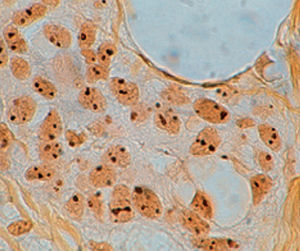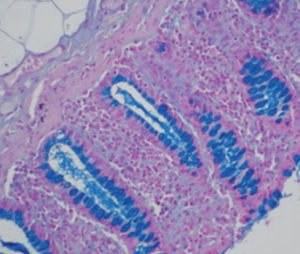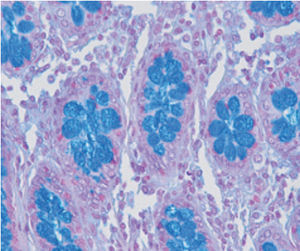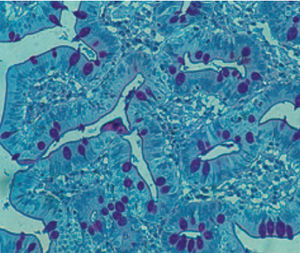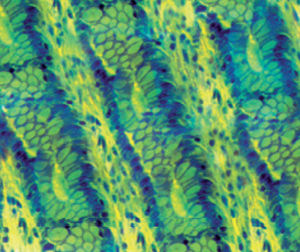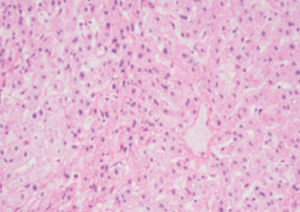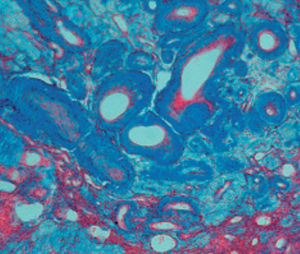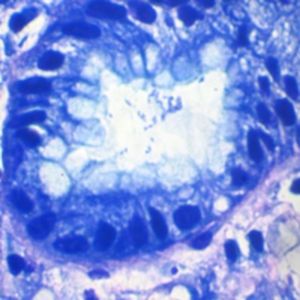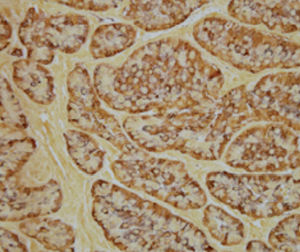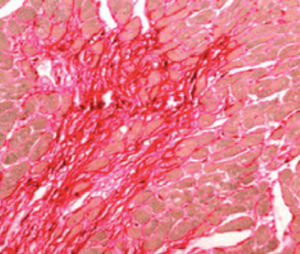
- Laboratory
- Laboratory medicine
- Staining solution reagent
- BIO-OPTICA Milano
- Company
- Products
- Catalogs
- News & Trends
- Exhibitions
Staining solution reagent P.T.A.H.for histologyfor cytology
Add to favorites
Compare this product
Characteristics
- Type
- staining solution
- Applications
- for histology, for cytology
Description
Minimum number of tests that can be performed 100
Completion time 13 minutes + overnight
Shelf life 2 years
Storage conditions 15-25°C
Additional equipment Not required
Application
The method, originally proposed for staining the glia, is now mainly indicated for
differentiating smooth muscle from striated muscle (by staining the isotropic bands of
myofibrils of the skeletal muscle); it is also one of the methods of choice for fibrin.
Result
Nuclei, fibrin (most), myofibrils,
astrocytes, certain elastic fibers,
glia, myelin fibers
dark blue
Collagen, bone matrix, cartilage brick red in various shades
Product for the preparation of cyto-histological samples for optical microscopy.
This method was initially proposed to stain neuroglia but at present, it is used especially to differentiate between smooth
muscular tissue and striated muscular tissue, since it stains isotropic bands of skeletal muscle’s myofibrils. Moreover, it is one of
the recommended methods to show fibrin.
PRINCIPLE
Phosphotungstic acid acts as an acid carrier for the dye; it attaches to fibrin and to tissue elements with both chemical and
physical links. Unlike most hematoxylins, this is a “progressive” method.
Catalogs
General Catalogue
164 Pages
Related Searches
- Bio-Optica solution reagent
- Laboratory reagent kit
- Bio-Optica histology reagent
- Reagent medium reagent kit
- Bio-Optica cytology reagent
- Bio-Optica stain reagent
- Buffer solution reagent kit
- Bacteria reagent kit
- Bio-Optica staining solution reagent
- Microscope slide
- Sample preparation reagent kit
- Pathology reagent
- Bilirubin reagent kit
- Bio-Optica fixative solution reagent
- Paraffin wax reagent
- Phosphate buffer reagent kit
- Microscopy reagent
- Collagen reagent kit
- Helicobacter pylori reagent kit
- Decalcifying solution reagent
*Prices are pre-tax. They exclude delivery charges and customs duties and do not include additional charges for installation or activation options. Prices are indicative only and may vary by country, with changes to the cost of raw materials and exchange rates.




